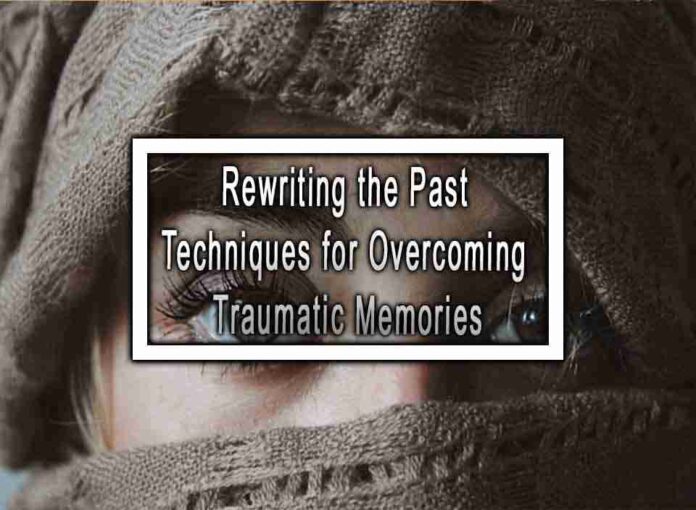Overcoming traumatic memories can be a challenging and complex process, but there are therapeutic techniques that individuals can use to help rewrite the past and heal from traumatic experiences. It’s essential to note that seeking professional help from a trained therapist or counselor is crucial when dealing with trauma. Here are some techniques that can be helpful in the healing process:
1. Therapy and Counseling:
Working with a qualified therapist or counselor specializing in trauma can be instrumental in addressing and processing traumatic memories. Therapies such as Cognitive Behavioral Therapy (CBT), Eye Movement Desensitization and Reprocessing (EMDR), and Trauma-Focused Cognitive Behavioral Therapy (TF-CBT) have shown effectiveness in treating trauma.
2. Mindfulness and Grounding Techniques:
Mindfulness practices and grounding techniques can help individuals stay present and manage overwhelming emotions related to traumatic memories. Deep breathing exercises, guided imagery, and meditation can assist in fostering a sense of safety and relaxation.
3. Cognitive Restructuring:
This technique involves challenging and reframing negative thought patterns related to the traumatic event. By replacing negative beliefs with more adaptive and realistic thoughts, individuals can begin to change their emotional responses to the memories.
4. Exposure Therapy:
Exposure therapy involves gradual and controlled exposure to traumatic memories in a safe environment. This technique allows individuals to process the memories in a controlled manner, reducing the emotional intensity over time.
5. Art Therapy:
Engaging in creative expression through art, writing, or other forms of self-expression can help individuals explore and process their traumatic experiences in a nonverbal way.

6. Supportive Networks:
Connecting with a supportive network of friends, family, or support groups can provide validation, understanding, and a sense of belonging, which are essential in the healing process.
7. Self-Compassion:
Practicing self-compassion involves being gentle and understanding with oneself during the healing journey. Acknowledging that healing takes time and being kind to oneself can foster resilience and self-empowerment.
8. Easing Triggers:
Identifying triggers that evoke traumatic memories and finding ways to ease their impact can help reduce distress. Creating a safe and supportive environment can provide comfort during difficult moments.
Remember that healing from traumatic memories is unique to each individual, and there is no one-size-fits-all approach. Patience, self-compassion, and professional guidance are essential components of the journey toward healing and rewriting the narrative of the past.










